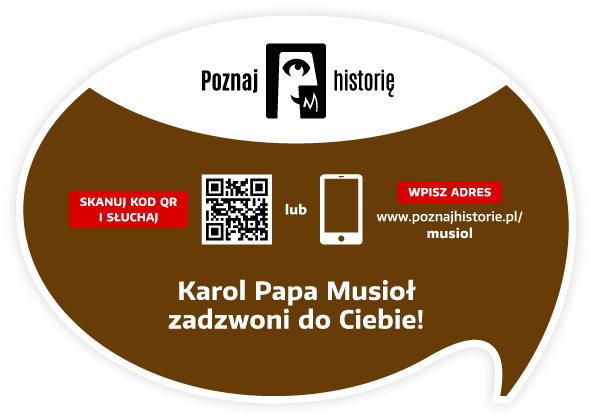Wzniesiono go z cegły na podstawie konstrukcji tzw. muru pruskiego. Jest to budynek dwukondygnacjowy, otynkowany i nakryty wysokimi wielospadowymi dachami. Skomplikowaną bryłę ozdabiają liczne ryzality, szczyty i werandy. Nad całością dominuje sześcioboczna wieża.
Zameczek - pośród wiecznie zielonych lasów, o wiekowym drzewostanie, których obszar do końca XVIII wieku był puszczą pamiętającą czasy polowań Piastów Śląskich - wybudował hrabia Andreas Renard, pierwszy właściciel huty w Zawadzkiem. Mieścił się on w sercu rezerwatu leśnego, zwanego „Zwierzyńcem Leśnym” („Tiergarden”).
Spotykali się tu niegdyś najwięksi przedstawiciele rodów szlacheckich z Górnego Śląska: książę Hohenlohe, książę Pless, hrabiowie Schaffgotsch i von Donnersmarck, hrabia Frankenberg, von Zawadzky oraz właściciel Mosznej, Thiele–Winckler. Bywał tu także ostatni niemiecki cesarz i król Prus Wilhelm II, a w czasie II wojny światowej swojej pasji oddawał się tutaj ponoć Wielki Łowczy III Rzeszy, Herman Goering.
Ważnym momentem w dziejach zameczku był rok 1910. Wtedy kupił go hrabia Tiele – Winckler z Pszczyny - posiadacz wielu dóbr ziemskich i budowli, w tym pałacu w Mosznej. Najprawdopodobniej to właśnie ten hrabia kazał przebudować go właśnie w stylu podobnym do słynnego pałacu w Mosznej.
Po II wojnie światowej zabytek został upaństwowiony. W 1953 roku zameczek myśliwski wraz z ogrodem stał się własnością Zgromadzenia Zakonnego Sióstr Szkolnych de Notre Dame.
1 stycznia 1976 roku rozpoczęły się natomiast dzieje Domu Pomocy Społecznej, które trwają do dzisiaj.
Zameczek Myśliwski
W pobliżu malowniczej, meandrującej zygzakami w gąszczu roślinności rzeki Mała Panew znajduje się perełka architektury – zameczek myśliwski.

How it working
Aby posłuchać historii pomników w ramach projektu „Poznaj historię” należy wykonać kilka prostych czynności. Poniżej przedstawiamy krótką „instrukcję obsługi” - krok po kroku, tak aby w miarę prosto przedstawić Państwu sposób dotarcia do minisłuchowisk.

Trzeba mieć smartfon z aparatem fotograficznym. Obiektyw aparatu należy skierować w kierunku tabliczki informacyjnej znajdującej się tuż obok pomnika. Poniżej pokazujemy widok samej tabliczki oraz przykładowego jej umiejscowienia przy pomniku Karola Musioła w Opolu.

Po skierowaniu aparatu smartfona na kod QR znajdujący się w prawej części tabliczki na aparacie pojawi się ekran powitalny aplikacji, a następnie ekran z nazwą, zdjęciem pomnika i przyciskiem „START”.

Przycisk „START” uruchamia proces odtwarzania minisłuchowiska.
Następne kroki podpowie nam smartfon po wysłuchaniu historii lub przerwaniu jej odtwarzania. Prosimy o obserwowanie ekranu smartfona!

Inne dostępne opcje: krótka informacja o pomniku, autorze tekstu oraz nagrania, wykaz innych pomników w mieście objętych projektem "poznaj historię", mapka pomników do pobrania, film oraz linki do mediów społecznościowych.


Chciałbyś wdrożyć projekt również w swoim mieście?
ContactWybierz obiekt
Zobacz galerię
Pomniki w mieście przypominają nam historię miejsc, ludzi, nawiązują do ważnych wydarzeń. To także dzieła pracy artystów. Brąz, metal, drewno czy beton zamienione w formę pomnikowego obelisku skupiają uwagę. Lubimy przy nich siadywać, fotografować się, umawiać.
Poniżej pokazujemy Państwu, jak reagują osoby słuchające opowieści niemych zazwyczaj pomników. Jak się uśmiechają, zamyślają, czasem dziwią albo bawią…
Partnerzy projektu
Realizacja projektu „Poznaj historię” w każdym z miast wymaga zaangażowania wielu ludzi: programistów, grafików, autorów tekstów, aktorów, realizatorów dźwięku czy osób koordynujących całe przedsięwzięcie. To dzięki nim powstał te projekt.
Naszą ambicją jest, aby jego zasięg stale się rozszerzał. Dlatego dziękujemy obecnym partnerom i zapraszamy kolejne miasta, instytucje oraz firmy i osoby prywatne do współpracy!



Visit Social media:
Share Social media: